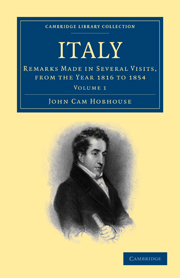Summary
I shall now proceed to make some remarks on the various causes of the destruction of the buildings of ancient Rome, a subject on which, it is said with the utmost deference, the last chapter of our great historian Gibbon has furnished a hasty outline rather than the requisite details. The inquiry has partaken of the fate of all disputed points. The exculpation of the Goths and Vandals has been thought prejudicial to the Christians, and the praise of the latter regarded as an injustice to the barbarians; but, forgetting the controversy, perhaps we shall find both the one and the other to have been more active despoilers than has been confessed by their mutual apologists. To begin with
THE BARBARIANS.
A learned Tuscan, the friend of Tasso, wrote a treatise expressly on this subject, and positively asserted that from Alaric to Arnulphus no damage was done by the Barbarians to any of the public edifices of Rome. He owned that such an opinion would appear paradoxical, and so indeed will it be found after a cursory survey, and even as he treats the inquiry. It is certain that Alaric did burn a part of Rome. Orosius, by making the comparison between the former great fires and that of the Goths, shows that such a comparison might be suggested by the magnitude of the latter calamity.
- Type
- Chapter
- Information
- ItalyRemarks Made in Several Visits, from the Year 1816 to 1854, pp. 330 - 359Publisher: Cambridge University PressPrint publication year: 2009First published in: 1859



